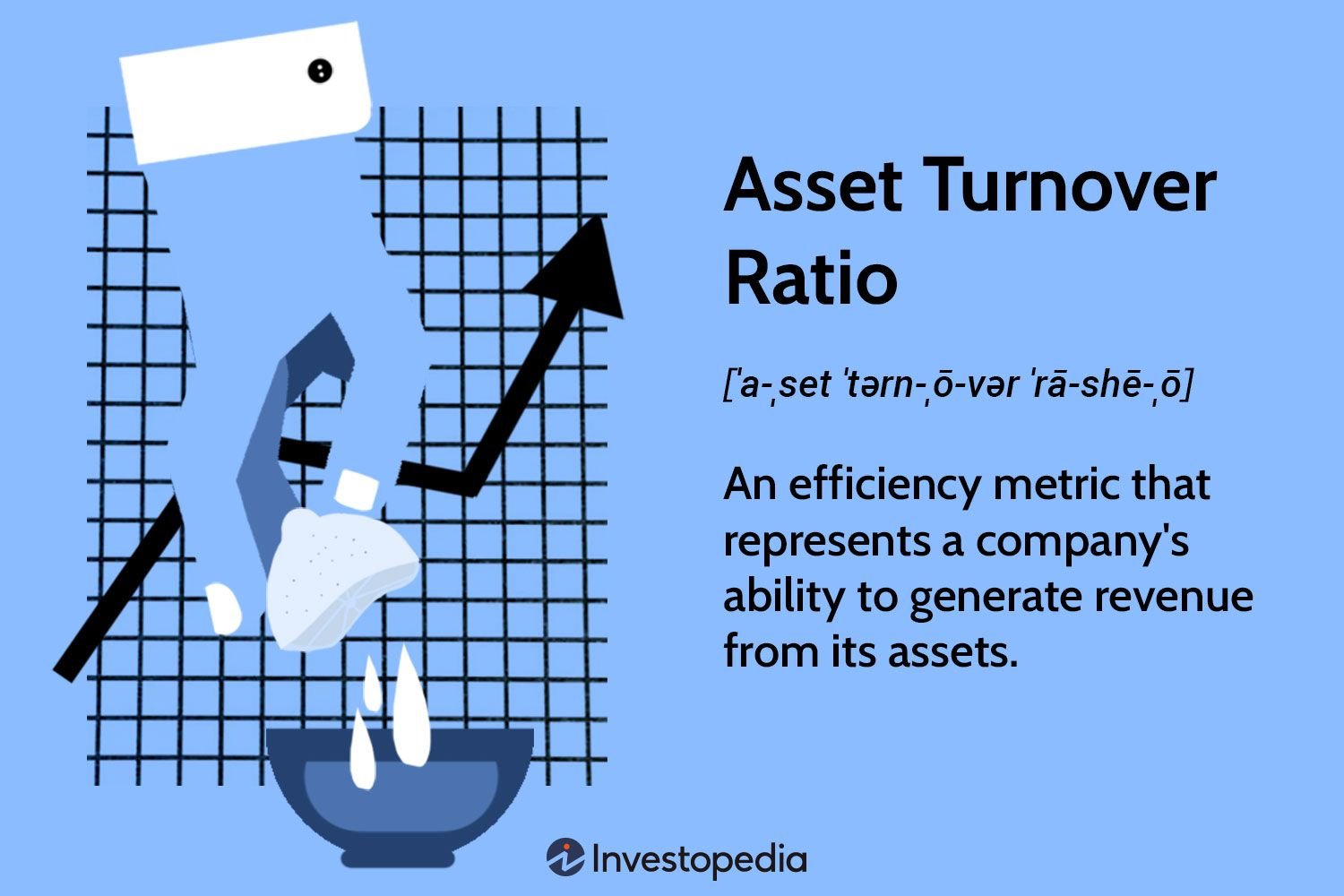Asset turnover ratio is a vital metric that every business owner should grasp to assess their company’s efficiency in utilizing its assets. Wondering how to understand asset turnover ratio in businesses? You’ve come to the right place! This article will provide you with a comprehensive understanding of this ratio and its significance in evaluating the performance of your business. So, let’s dive in and demystify the complexities behind the asset turnover ratio, empowering you to make informed decisions for your company’s growth.
Understanding Asset Turnover Ratio in Businesses
As a business owner or investor, it is essential to have a clear understanding of financial ratios that can provide insight into a company’s performance. One such ratio that is widely used is the asset turnover ratio. This ratio measures how efficiently a company utilizes its assets to generate revenue. By analyzing this ratio, you can gain valuable insights into a company’s operational efficiency and its ability to generate sales from its assets.
What is the Asset Turnover Ratio?
The asset turnover ratio is a financial metric that measures the efficiency of a company’s use of its assets to generate revenue. It quantifies the company’s ability to convert its investments in assets, such as inventory, property, plant, and equipment, into sales. The formula for calculating the asset turnover ratio is as follows:
Asset Turnover Ratio = Net Sales / Average Total Assets
This ratio helps businesses and investors evaluate how effectively a company uses its resources to generate revenue. A high asset turnover ratio indicates that a company efficiently utilizes its assets to generate sales, while a low ratio suggests the opposite.
Why is the Asset Turnover Ratio Important?
The asset turnover ratio is an important indicator of a company’s operational efficiency. It can provide insights into the effectiveness of a company’s operations and its ability to generate sales from its assets. Here are a few reasons why understanding this ratio is important:
1. Efficiency measurement: The asset turnover ratio helps businesses assess how efficiently they are utilizing their assets. By comparing this ratio to industry benchmarks or competitors, businesses can identify areas of improvement or potential inefficiencies.
2. Capital allocation: Investors often use the asset turnover ratio to evaluate a company’s ability to generate sales relative to its asset base. This information helps investors make informed decisions about where to allocate their capital.
3. Industry analysis: The asset turnover ratio is a valuable tool for comparing the efficiency of companies within the same industry. It allows for benchmarking and identifying industry leaders in terms of asset utilization.
4. Trend analysis: By tracking changes in the asset turnover ratio over time, businesses can identify trends and patterns in their operational efficiency. This information can be used to make strategic decisions and drive continuous improvement.
Interpreting the Asset Turnover Ratio
To fully understand the implications of the asset turnover ratio, it is important to interpret the ratio in the context of the industry and company-specific factors. Here are some considerations when interpreting the asset turnover ratio:
1. Industry differences: Different industries have varying levels of asset intensity. For example, manufacturing companies typically require more assets to generate revenue compared to service-based businesses. Therefore, it is crucial to compare the asset turnover ratio to industry benchmarks to gain meaningful insights.
2. Company size: Larger companies generally have lower asset turnover ratios due to their extensive asset bases. It is essential to compare a company’s asset turnover ratio with its industry peers of similar size to get a more accurate assessment of its operational efficiency.
3. Asset mix: Companies with a diverse range of assets may have varying asset turnover ratios for each asset category. Analyzing the ratio at a more granular level, such as inventory turnover or fixed asset turnover, can provide deeper insights into specific aspects of a company’s operations.
4. Seasonal variations: Some businesses experience seasonal fluctuations in revenue and asset utilization. It is important to consider these variations when assessing the asset turnover ratio. Comparing ratios across different time periods can help identify these seasonal patterns.
Improving Asset Turnover Ratio
A low asset turnover ratio can indicate inefficiencies in a company’s operations and asset utilization. If your business has a low asset turnover ratio, here are some strategies to improve it:
1. Optimize inventory management: Excess inventory ties up working capital and can negatively impact the asset turnover ratio. Implementing effective inventory management techniques, such as just-in-time (JIT) inventory, can help reduce carrying costs and improve asset turnover.
2. Streamline production processes: Identify bottlenecks in your production processes and implement measures to streamline operations. Eliminating inefficiencies can lead to increased productivity and improved asset turnover.
3. Enhance sales and marketing efforts: Increasing sales can positively impact the asset turnover ratio. Invest in marketing strategies to attract more customers and improve sales conversion rates. Understanding customer needs and preferences can help tailor sales efforts more effectively.
4. Rationalize asset base: Evaluate your asset base and identify underutilized or obsolete assets. Selling or disposing of these assets can free up capital and improve asset turnover.
Limitations of the Asset Turnover Ratio
While the asset turnover ratio is a useful tool, it does have some limitations that should be considered:
1. Industry variations: Different industries have different asset turnover ratios due to variations in business models and asset requirements. It is crucial to compare ratios within the same industry for meaningful analysis.
2. Ignoring profitability: The asset turnover ratio does not consider the profitability of a company. A company may have a high asset turnover ratio but low profitability, indicating operational inefficiencies or pricing challenges.
3. Depreciation impact: The asset turnover ratio does not consider the impact of depreciation on asset values. Older assets may have lower carrying values, which can artificially inflate the asset turnover ratio.
4. Time period consistency: Comparing asset turnover ratios across different time periods may not account for changes in seasonality or business cycles. It is important to consider these factors when analyzing the ratio.
In conclusion, understanding the asset turnover ratio is crucial for businesses and investors alike. It provides insights into a company’s operational efficiency and its ability to generate sales from its asset base. By analyzing this ratio in the context of industry benchmarks and company-specific factors, businesses can identify areas of improvement and make informed decisions for future growth.
What is the Asset Turnover Ratio?
Frequently Asked Questions
Frequently Asked Questions (FAQs)
What is the asset turnover ratio?
The asset turnover ratio is a financial metric used to measure a company’s ability to generate sales revenue from its assets. It indicates how efficiently a company utilizes its assets to generate sales.
How is the asset turnover ratio calculated?
The asset turnover ratio is calculated by dividing the net sales of a company by its average total assets. The formula is: Asset Turnover Ratio = Net Sales / Average Total Assets.
What does a high asset turnover ratio indicate?
A high asset turnover ratio suggests that a company is efficient in generating sales revenue from its assets. It indicates that the company is utilizing its assets effectively, resulting in a higher level of productivity and profitability.
What does a low asset turnover ratio indicate?
A low asset turnover ratio implies that a company is not effectively utilizing its assets to generate sales revenue. It may indicate inefficiencies in operations or underutilization of assets, which can affect the company’s profitability.
How can I improve the asset turnover ratio?
To improve the asset turnover ratio, you can focus on increasing sales revenue while maintaining or reducing the level of assets. This can be achieved through strategies such as improving marketing and sales efforts, optimizing operations, eliminating obsolete assets, and streamlining processes.
What are the limitations of the asset turnover ratio?
The asset turnover ratio is a useful metric but has certain limitations. It may not provide a complete picture of a company’s overall financial health, as it only considers the relationship between sales and assets. Additionally, industries with different asset structures may have varying interpretations of what constitutes a “good” asset turnover ratio.
How does the asset turnover ratio vary across industries?
The asset turnover ratio can vary significantly across industries due to differences in business models, asset requirements, and sales cycles. Some industries, such as retail and manufacturing, typically have higher asset turnover ratios, while capital-intensive industries, such as utilities or real estate, may have lower ratios.
Is a higher asset turnover ratio always better?
While a higher asset turnover ratio generally indicates efficiency in asset utilization, it may not always be better. A very high asset turnover ratio could imply aggressive sales practices, such as selling inventory at discounted prices, which may impact profitability in the long term. It is important to analyze the ratio in conjunction with other financial indicators for a comprehensive assessment.
Final Thoughts
The asset turnover ratio is a valuable tool for understanding the efficiency of a business in utilizing its assets to generate revenue. By calculating this ratio, businesses can assess how well they are using their assets to generate sales. A higher ratio indicates that the company is generating more revenue per dollar of assets, while a lower ratio may indicate inefficiencies or underutilization of assets. Understanding the asset turnover ratio is crucial for businesses as it helps identify areas of improvement and optimize resource allocation. With a clear understanding of this ratio, businesses can make informed decisions to enhance their operational efficiency and profitability.



